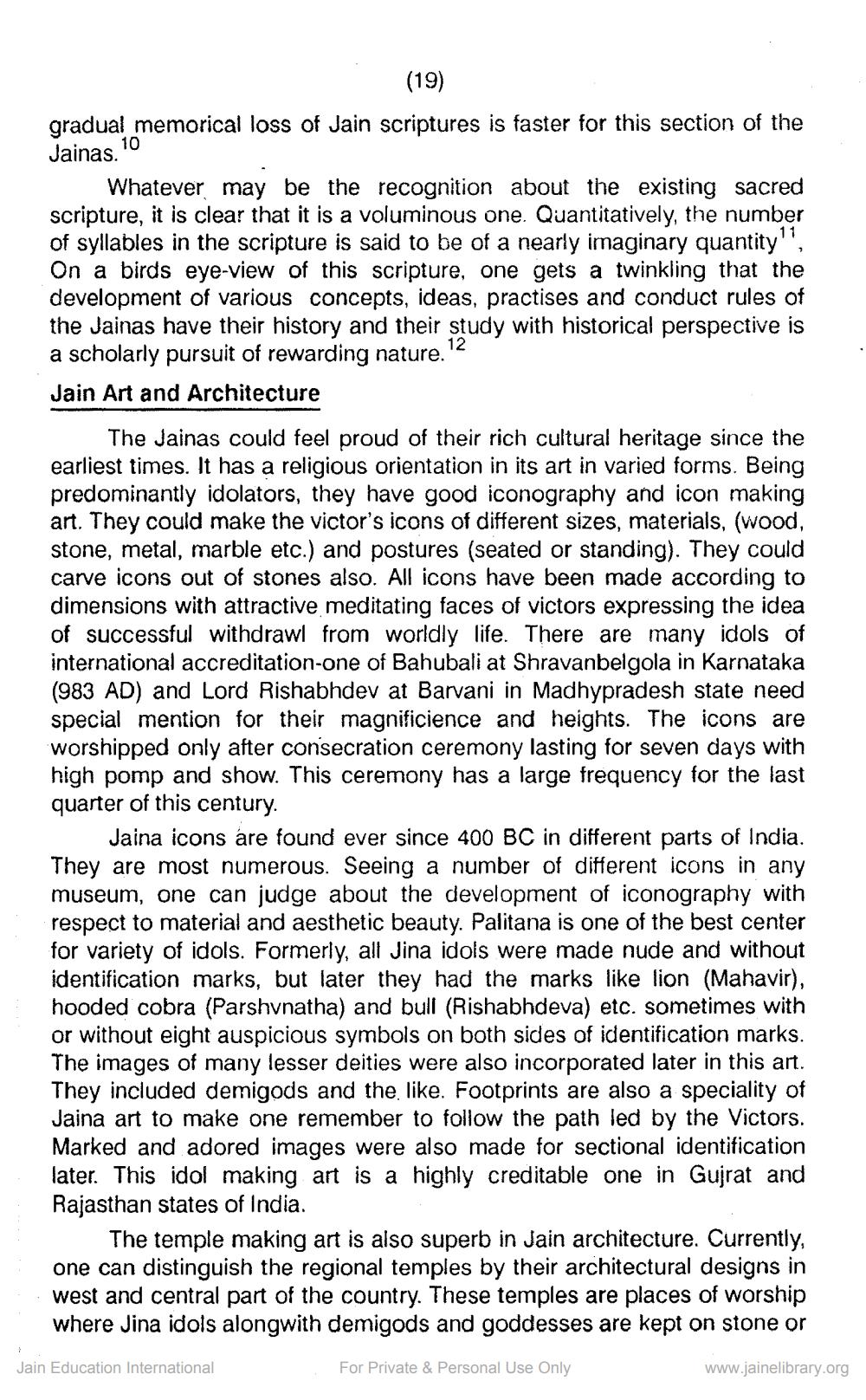________________
(19) gradual memorical loss of Jain scriptures is faster for this section of the Jainas. 10
Whatever may be the recognition about the existing sacred scripture, it is clear that it is a voluminous one. Quantitatively, the number of syllables in the scripture is said to be of a nearly imaginary quantity', On a birds eye-view of this scripture, one gets a twinkling that the development of various concepts, ideas, practises and conduct rules of the Jainas have their history and their study with historical perspective is a scholarly pursuit of rewarding nature. Jain Art and Architecture
The Jainas could feel proud of their rich cultural heritage since the earliest times. It has a religious orientation in its art in varied forms. Being predominantly idolators, they have good iconography and icon making art. They could make the victor's icons of different sizes, materials, (wood, stone, metal, marble etc.) and postures (seated or standing). They could carve icons out of stones also. All icons have been made according to dimensions with attractive meditating faces of victors expressing the idea of successful withdrawl from worldly life. There are many idols of international accreditation-one of Bahubali at Shravanbelgola in Karnataka (983 AD) and Lord Rishabhdev at Barvani in Madhypradesh state need special mention for their magnificience and heights. The icons are worshipped only after consecration ceremony lasting for seven days with high pomp and show. This ceremony has a large frequency for the last quarter of this century.
Jaina icons are found ever since 400 BC in different parts of India. They are most numerous. Seeing a number of different icons in any museum, one can judge about the development of iconography with respect to material and aesthetic beauty. Palitana is one of the best center for variety of idols. Formerly, all Jina idols were made nude and without identification marks, but later they had the marks like lion (Mahavir), hooded cobra (Parshvnatha) and bull (Rishabhdeva) etc. sometimes with or without eight auspicious symbols on both sides of identification marks. The images of many lesser deities were also incorporated later in this art. They included demigods and the like. Footprints are also a speciality of Jaina art to make one remember to follow the path led by the Victors. Marked and adored images were also made for sectional identification later. This idol making art is a highly creditable one in Gujrat and Rajasthan states of India.
The temple making art is also superb in Jain architecture. Currently, one can distinguish the regional temples by their architectural designs in west and central part of the country. These temples are places of worship where Jina idols alongwith demigods and goddesses are kept on stone or
Jain Education International
For Private & Personal Use Only
www.jainelibrary.org




